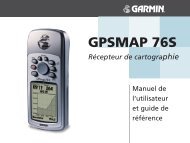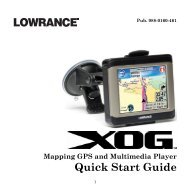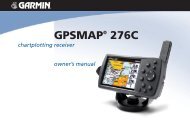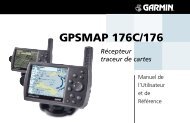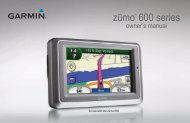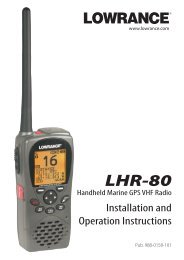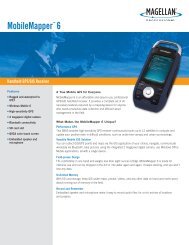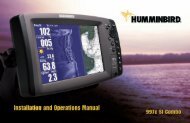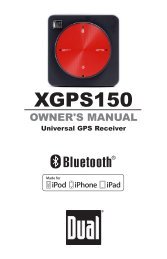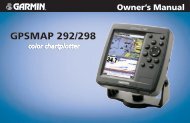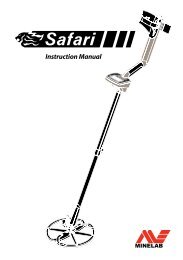X515C DF & X510C Manual - Lowrance
X515C DF & X510C Manual - Lowrance
X515C DF & X510C Manual - Lowrance
You also want an ePaper? Increase the reach of your titles
YUMPU automatically turns print PDFs into web optimized ePapers that Google loves.
oat hulls have a flat keel pad that offers a good mounting surface. On<br />
vee hulls, try to place the transducer where the deadrise is 10° or less.<br />
Deadrise less than 10°<br />
Strakes<br />
Pad<br />
Left, vee pad hull; right, vee hull. A pod style transducer is shown<br />
here, but the principle is the same for Skimmers inside a hull.<br />
4. If the transducer is mounted on the transom, make sure it doesn't<br />
interfere with the trailer or hauling of the boat. Also, don't mount it<br />
closer than approximately one foot from the engine's lower unit. This<br />
will prevent cavitation (bubble) interference with propeller operation.<br />
5. If possible, route the transducer cable away from other wiring on the<br />
boat. Electrical noise from engine wiring, bilge pumps and aerators<br />
can be displayed on the sonar's screen. Use caution when routing the<br />
transducer cable around these wires.<br />
CAUTION: Clamp the transducer<br />
cable to transom near<br />
the transducer. This will help<br />
prevent the transducer from<br />
entering the boat if it is<br />
knocked off at high speed.<br />
Good location<br />
Good<br />
location<br />
Poor location<br />
Poor angle Good location<br />
Good and poor transducer locations.<br />
How low should you go?<br />
For most situations, you should install your Skimmer transducer so<br />
that its centerline is level with the bottom of the boat hull. This will<br />
usually give you the best combination of smooth water flow and protection<br />
from bangs and bumps.<br />
9



